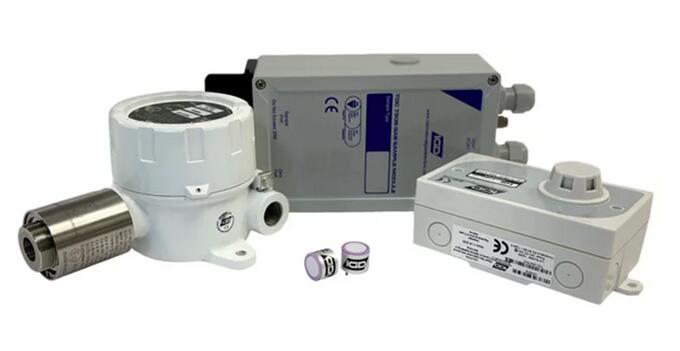

As Peru soars up the unwanted pecking order of those countries so severely hit by the Covid-19 (coronavirus) pandemic and scenes describe a chronic lack of oxygen supply, gasworld looks at the make-up of the country’s gases business, with data from gasworld Business Intelligence.
There are fears that the deepening crisis will have a negative impact on a Peruvian economy which had been performing relatively healthily in recent years, with low inflation.
Scenes of oxygen shortages in Peru as Covid-19 crisis deepens
According to gasworld’s Business Intelligence’s 2018 report on the market, in the decade between 2008 and 2018 GDP grew by an average of 4.9% when adjusted for inflation.
Telecommunications and financial services have been the main contributors to a growing Peruvian economy which still has a long way to go until it fully modernises and, therefore, a great deal of potential to be realised.
In recent years, economic activity in the country has benefitted from a favourable international context, particularly from improving terms of trade. The combination of economic modernisation, natural resource abundance and continued improvements in economic governance and political stability had been helping Peru to emerge as one of the most stable economies in Latin America.
Industrial gas growth
Against this improving backdrop, the industrial gas market in Peru has been steadily growing too, at a similar average annual growth rate of 4.5% for the decade from 2008-2018. This resulted in a Peruvian industrial gases market worth just under $170m in 2018.
The current crisis at the hands of coronavirus puts the attention squarely on the country’s healthcare sector and oxygen supply, two sectors that go hand-in-hand. Oxygen is indeed the most prominent gas in Peru by revenues, however it is to the metallurgy business that it is perhaps most closely linked.
Metallurgy is the most important end-use sector in Peru from a point of view of gas sales, accounting for almost half of the revenues in the region (46.5%) in 2018. The next two main revenue generating end-users are the refining and manufacturing industries, with market shares of 16.6% and 8%, respectively. All the other end-user markets are responsible for less than 7.5% of the industrial gas revenues in Peru, including the healthcare sector – which made up just 7.2% of industrial gas revenues (primarily oxygen) in 2018.
Ammonia gas is classed as a toxic gas under COSHH regulations and therefore you will require an ammonia gas detection system to monitor the atmosphere to comply with COSHH. However, one of the main downfalls of current ammonia gas sensors is that they don’t really fit the bill, especially for refrigeration plants.
Ammonia gas is classed as a toxic gas under COSHH regulations and therefore you will require an ammonia gas detection system to monitor the atmosphere to comply with COSHH. However, one of the main downfalls of current ammonia gas sensors is that they don’t really fit the bill, especially for refrigeration plants.
Existing electrochemical sensors are consumed by Ammonia as they are monitoring. This means if you have a background level in a plant room, then your sensor life will be drastically reduced. This also means, your sensor could become fully consumed and useless should a gas leak occur. In either case this leads to a detector which no longer correctly reads Ammonia, a potentially fatal problem as you no longer have a working ammonia gas detection system.
There are also then application problems to consider
Existing electrochemical sensors are generally only specified to -20 Deg C. Current electrochemical sensors require water vapour to operate. This means, long term performance in an environment around -20 ℃ will not be good for electrochemical sensor. At -20 degrees centigrade there is little water vapour in the air for the ammonia gas detector to operate.
A current alternative is to use optical sensors for Ammonia gas detection based on infrared technology. The problem here is again operation at low temperatures. Temperature compensation, condensation and icing problems all make refrigeration applications a challenge for Ammonia infrared sensors.

Source: International Gas Detection
IGD’s Ionic Long Life Ammonia Cells. Non Self-Depleting Sensors.
The Solution – New Ionic Based Sensors for Ammonia Gas Detection from International Gas Detectors Ltd
By adopting advanced materials and careful optimisation of the design, we have successfully developed and released a series of long-life Ammonia sensors based on Ionic technology.
This technology is not consumptive, thus allowing the sensors to operate effectively where Ammonia is either continuously present at low levels or during an accidental release.
This technology does not use water in its electrolyte allowing operation down as low as -40 Deg C providing accurate and reliable ammonia gas detection, especially for harsh environments such as industrial refrigeration applications.
Ranges are available up to 5000 PPM. This new product family finally resolves the deficiencies of short life spans and low maximum range of the existing consumable Ammonia sensors in the market. International Gas Detectors Ltd provide these sensors in several formats including: ATEX rated devices, safe area (non-ATEX) and sampling detectors. A range of accessories are available to suit your application including, splash and dust guards, probes and adaptors.
IGD’s gas detection systems are tested to BS EN 60079-29-1 and are compliant with BS EN 378 and BS EN 45544.

Source: International Gas Detection
IGD’s Range of Gas Detectors including: ATEX rated (Far Left), Samplers (middle) and Safe Area (Far Right)